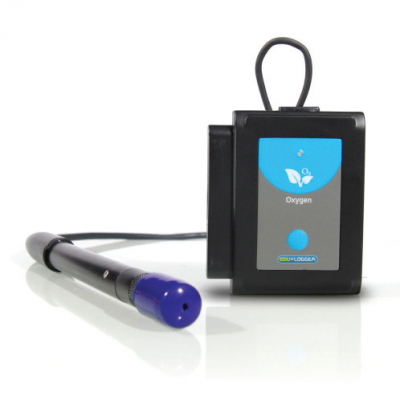EDU-LOGGER OXYGEN LOGGER SENSOR
-
Description
This sensor can be used to make measurements of the level
of free-oxygen in air or dissolved oxygen in water. The freeoxygen
in air mode is used to measure changes in oxygen
levels during combustion or in reactions that produce oxygen
(hydrogen peroxide decomposition). The dissolved oxygen
mode is useful in the study of photosynthesis. The oxygen
sensor is designed for use both in the school laboratory and
in the field. It employs easy-to-use polarographic (Clark)
technology and replaceable membranes are available for it.
The electrode itself is constructed of Delrin® for durability.
With its integral thermistor, it provides dependable temperature-compensated measurements. The
thermistor is housed in stainless steel and sealed on the electrode’s outer wall providing fast, accurate
readings.
Sensor Calibration:
The sensor should be connected to a voltage source (the USB module plugged into a computer, Edu-
Logger’s™ Display unit or Battery module). For free Oxygen, calibration of the probe is simply achieved
in open air, taking this as a standard level of 20.9% (assuming stable level in the Earth’s atmosphere at
sea-level) and pressing the push-button on the sensor’s box for about 3 seconds when the readings
are stable. The sensor will then be calibrated at 20.9%. In liquid, the sensor is calibrated to 100% in an
Oxygen saturated solution.

